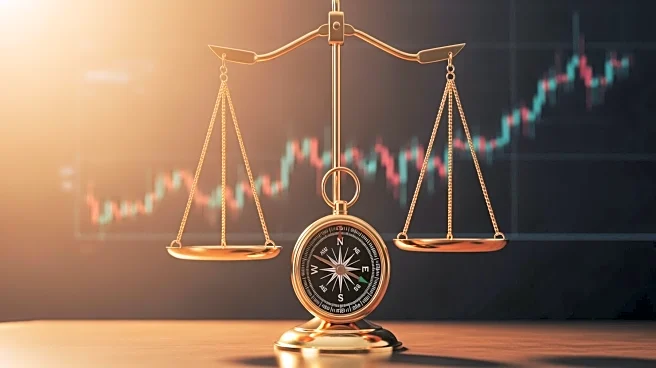What's Happening?
Gold and silver markets are currently experiencing significant price pressure, with bearish chart patterns forming. According to Jim Wyckoff, a seasoned market analyst, these developments are influenced by various factors including the U.S. dollar index,
December gold futures, and 10-year U.S. Treasury yields. The pressure on gold and silver prices is part of a broader trend affecting commodities, as investors react to economic indicators and market forecasts. Wyckoff, who has extensive experience in financial journalism and commodity market analysis, provides daily insights into these market dynamics through his analytical service.
Why It's Important?
The price movements in gold and silver are crucial for investors and industries reliant on these metals. As safe-haven assets, fluctuations in their prices can signal broader economic trends and affect investment strategies. The bearish patterns suggest potential challenges for stakeholders in the mining and metals sectors, as well as for investors seeking stability in precious metals. These developments may influence decisions in related markets, including gold-backed ETFs and U.S. stock indexes, impacting financial portfolios and economic forecasts.
What's Next?
Market analysts and investors will closely monitor upcoming economic data releases and policy decisions that could further influence gold and silver prices. The interplay between U.S. Treasury yields and the dollar index will be particularly significant, as they are key drivers of commodity prices. Stakeholders may adjust their strategies based on these indicators, potentially leading to shifts in investment flows and market sentiment.
Beyond the Headlines
The current price pressure on gold and silver may also reflect broader economic uncertainties, including inflation concerns and geopolitical tensions. These factors could have long-term implications for global trade and economic stability, influencing how investors perceive risk and value in commodity markets.













